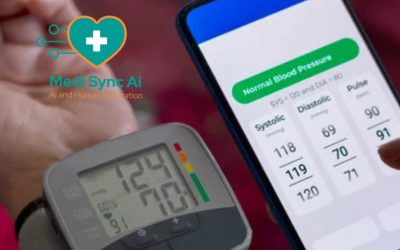As we enter 2024, Remote Patient Monitoring (RPM) continues to revolutionize healthcare delivery, offering providers new opportunities to enhance patient care while optimizing revenue. Medi Sync AI, a leading remote patient monitoring company based in Texas, is at the forefront of this transformation, helping healthcare providers across the Lone Star State implement effective RPM programs. This guide will help healthcare professionals navigate these complex aspects to ensure they are properly reimbursed for their RPM services in 2024.
Growing Importance of Remote Patient Monitoring in Texas
Remote Patient Monitoring has become an essential component of modern healthcare delivery, especially in Texas where vast distances can often separate patients from their healthcare providers. Medi Sync AI innovative RPM solutions are bridging this gap, enabling healthcare professionals to monitor patients vital signs and health data in real-time, without the need for frequent in-person visits.
Furthermore, Texas healthcare systems benefit from generous Medicare reimbursements for RPM services. Understanding the latest CPT codes and reimbursement guidelines is crucial for providers aiming to maximize revenue while delivering high-quality, patient-centered care.
Key Benefits of Medi Sync AI RPM Services
- Improved Patient Outcomes: Continuous monitoring of vital signs and health metrics allows for early detection and intervention.
- Enhanced Patient Engagement: User-friendly devices and software empower patients to actively manage their health.
- Reduced Healthcare Costs: Prevention of complications leads to fewer emergency room visits and hospitalizations.
- Increased Access to Care: Patients in rural Texas communities gain access to high-quality care despite geographic constraints.
2024 RPM CPT Codes and Reimbursement Rates
For 2024, the Centers for Medicare and Medicaid Services (CMS) has updated the RPM CPT codes and reimbursement rates. Here’s a comprehensive breakdown of the key codes:
CPT 99453: Initial Setup and Patient Education
– One-time billing per episode of care
– Average national payment rate: $19.65
– Covers device setup and patient education
CPT 99454: Device Supply and Data Transmission
– Billable once per 30-day period
– Average national payment rate: $46.50
– Requires at least 16 days of data collection
CPT 99457: First 20 Minutes of RPM Services
– Billable once per calendar month
– Average national payment rate: $48.14
– Covers 20 minutes of RPM services by qualified healthcare professionals
CPT 99458: Additional 20-Minute Increments
– Billable for each additional 20 minutes after 99457
– Average national payment rate: $38.64
CPT 99091: Collection and Interpretation of Physiologic Data
– Billable once per calendar month
– Average national payment rate: $52.71
– Covers at least 30 minutes of clinical staff time
HCPCS G0511: General Care Management for Rural Health Clinics and FQHCs
– Used for general care management, including RPM services
– Can be billed for multiple instances and programs
Remote Therapeutic Monitoring (RTM) Codes
CPT 98975: RTM Setup and Education
– Initial setup and patient education for RTM equipment
CPT 98976 and 98977: RTM Device Supply
– Supply of RTM devices for respiratory or musculoskeletal system monitoring
CPT 98980 and 98981: RTM Treatment Management Services
– First 20 minutes and each additional 20 minutes of RTM treatment management
Key RPM Billing Requirements for 2024
To ensure proper reimbursement and compliance, healthcare providers using Medi Sync AI RPM solutions should adhere to the following requirements:
- Obtain patient consent before initiating RPM services
- Use FDA-approved medical devices for data collection
- Collect a minimum of 16 days of data per 30-day period
- Provide interactive communication with patients
- Document all RPM activities thoroughly
- Ensure proper supervision of clinical staff
Best Practices for RPM Implementation with Medi Sync AI
Implementing an effective RPM program requires careful planning, training, and execution. Below are some best practices to ensure success with Medi Sync AI RPM services:
- Select Appropriate Technology: Choose Medi Sync AI user-friendly devices that integrate seamlessly with your existing systems.
- Engage and educate patients: Provide comprehensive training on Medi Sync AI device usage and the importance of consistent data reporting.
- Establish clear protocols: Develop guidelines for data collection, monitoring, and intervention using Medi Sync AI platform.
- Leverage data analytics: Use Medi Sync AI-powered analytics to identify trends and intervene early in patient care.
- Integrate with existing workflows: Ensure Medi Sync AI RPM activities complement your current care delivery processes.
Medi Sync AI Cutting-Edge RPM Technology
MediSync AI leverages state-of-the-art technology to provide comprehensive remote patient monitoring services across Texas. Our advanced RPM devices and software platform offer:
- Real-time Data Transmission: Vital signs and health metrics are securely transmitted to healthcare providers in real-time.
- AI-powered Analytics: Our platform utilizes artificial intelligence to analyze patient data, identifying trends and potential health risks.
- Seamless EHR Integration: Medi Sync AI RPM solutions integrate seamlessly with existing Electronic Health Record (EHR) systems.
Remote Patient Monitoring for Chronic Conditions
Medi Sync AI specializes in providing RPM solutions for a wide range of chronic conditions prevalent in Texas, including:
– Diabetes
– Hypertension
– Congestive Heart Failure
– Chronic Obstructive Pulmonary Disease (COPD)
– Asthma
Future of Healthcare in Texas: Medi Sync AI Vision
As we look towards the future of healthcare in Texas, Medi Sync AI is committed to driving innovation in remote patient monitoring. Our ongoing research and development efforts focus on:
– Expanding our range of RPM devices to cover more health conditions
– Enhancing our AI capabilities for more accurate predictive analytics
– Developing mobile applications for even greater patient engagement
Conclusion: Embracing the Future of Healthcare with Medi Sync AI
As a leading remote patient monitoring company in Texas, Medi Sync AI is at the forefront of the healthcare revolution. Our innovative RPM solutions are helping healthcare providers across the state deliver higher quality care, improve patient outcomes, and reduce healthcare costs.
By embracing Medi Sync AI remote patient monitoring technology and staying informed about the latest CPT codes and reimbursement rates, Texas healthcare providers can position themselves as leaders in modern healthcare delivery. Together, we can build a healthier future for Texas, ensuring patients receive the best possible care, regardless of their location.
To learn more about how Medi Sync AI can transform your healthcare practice with cutting-edge remote patient monitoring solutions and help you navigate the complex world of RPM billing, contact us today.





